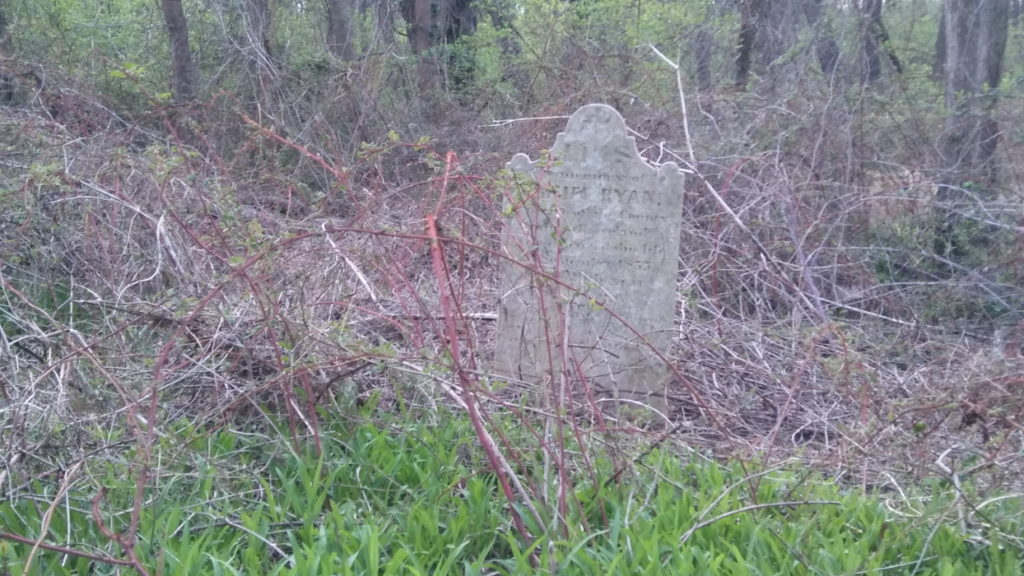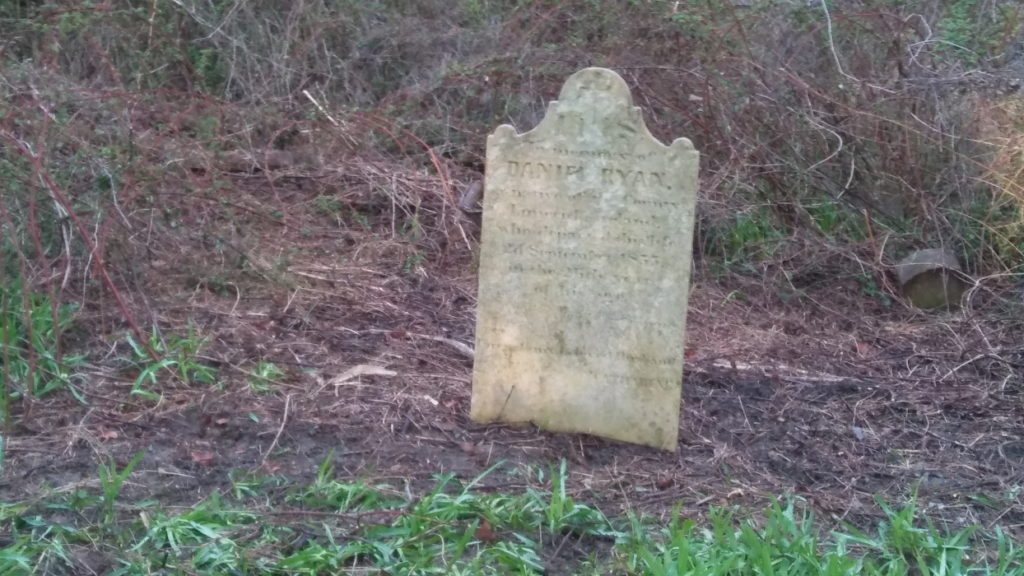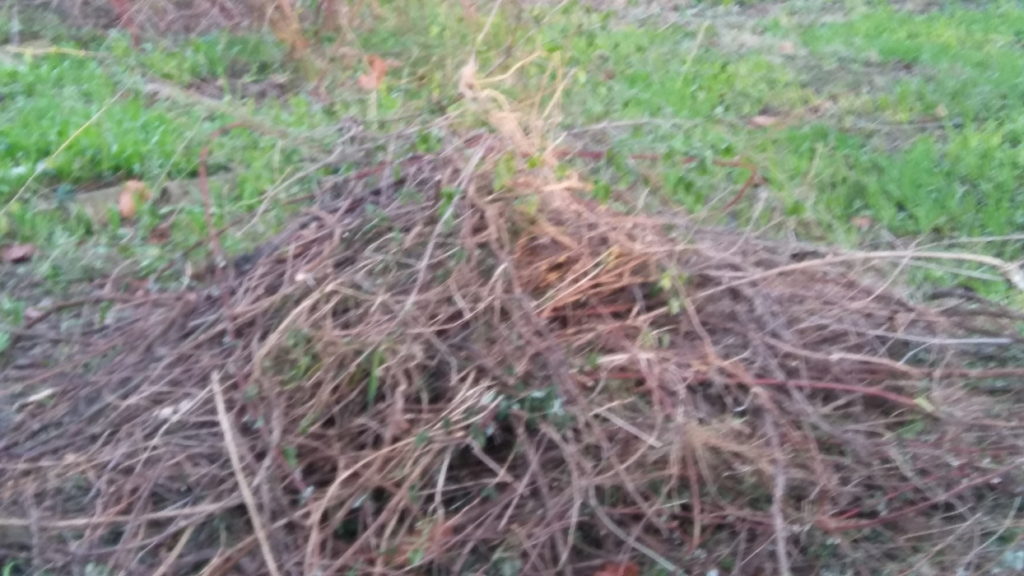By Joe Byrne
Last Lent, I made it a project to restore some graves here at St. Peter’s Cemetery, in West Baltimore. I was only able to do a few graves last year, and I’m late doing it this year, but every bit counts.
Last year I discovered the oldest gravestone I’ve seen here yet: that belonging to Daniel Ryan, who died and was buried at St. Peter’s in 1855, only four years after the cemetery was opened. Unfortunately, it was in the middle of a briar patch (actually, a patch of invasive multiflora rose and wine berry), which made it inaccessible and hard to read.

I decided to make Daniel Ryan’s gravestone my first project this year. I should say from the outset, that I wasn’t restoring the gravestone as such. It was remarkably well-preserved, given its age and that I was limestone, which wears down much quicker than marble and especially granite. What I did was improve the accessibility and readability of the gravestone.
After an hour, this is what the gravestone looked like:

I spent most of that hour pulling vines, and most of the vines were under the ground. I also pulled out the multiflora roses and the wine berries, as well as Amur honeysuckle, another aggressive invasive in the cemetery. I left behind a few tree saplings, and day lilies, which have colonized a good bit of the cemetery in the last couple years. Day lilies are also invasive, but I’m actually encouraging their growth, because they crowd out and out-compete other invasive plants (such as multiflora rose and wine berries), and particularly the vines. If day lilies can discourage vines from growing then climbing trees, that is good. Because inevitably they will strangle the trees and pull them down. When I no longer have a vine problem, I’ll worry about the day lily problem! Besides having lilies in a Catholic cemetery seems appropriate.
Here is the pile of pulled vines (though its hard to judge how big it is).

There are quite a few of similar vine piles in the cemetery. They need to be kept in separate piles so they won’t re-root. Unfortunately, they can’t go through wood chippers, lest they clog up the machine, so the piles pile up as it were. This is one of the vine problems we haven’t been able to solve yet.


